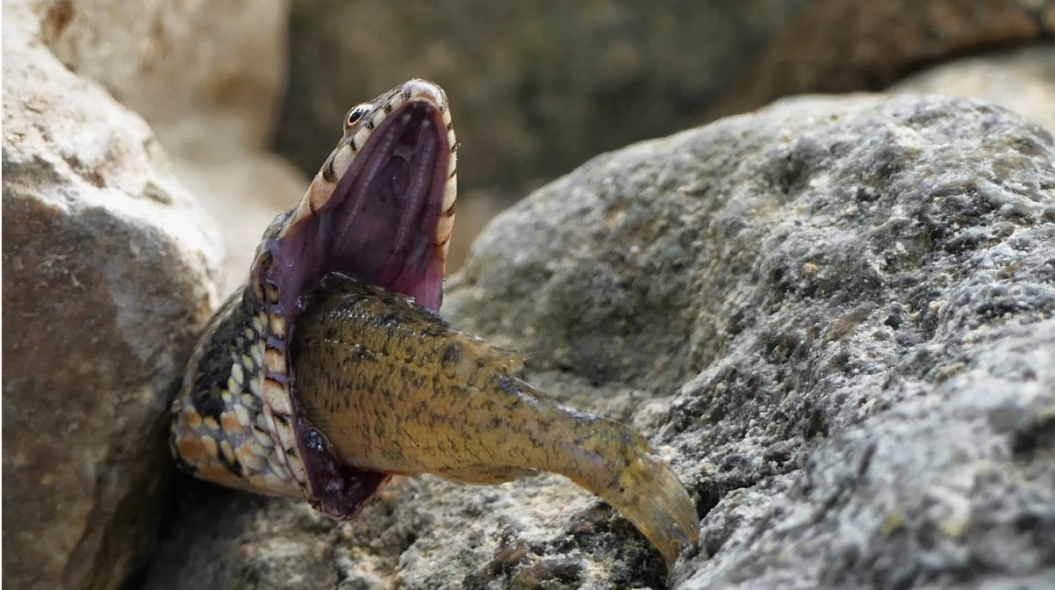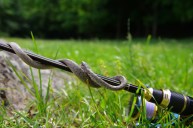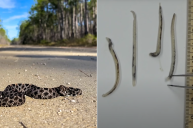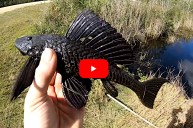Snakes often eat prey larger than themselves, but one viperine snake in France miscalculated when he tried to eat an invasive fish with a spiny dorsal fin. The fish became lodged in the snake's esophagus. Herpetologist Nicolas Fuento spotted the event and snapped a photo of the snake eating the fish. But he quickly realized there was something wrong with this picture.
The snake was struggling to get the fish down its throat. As a result, it began choking.
As he later wrote about the incident in the journal Herpetology Notes, the snake "showed unusual spasmodic movements" as it attempted to dislodge and expel the fish, but the spiny aquatic animal appeared to be lodged in the snake's esophagus. Fuento had an intern hold onto the snake as he worked to remove the fish. However, due to the fish's spines, it could not be pulled out.
Thinking quickly, Fuento instead pushed the fish further into the snake's mouth to dislodge the spines. He told LiveScience it was like"removing a hook from a fish's mouth." Thankfully for the snake, Fuento's approach worked and the snake was freed from its choking. The snake appeared unharmed and slithered off under a rock.
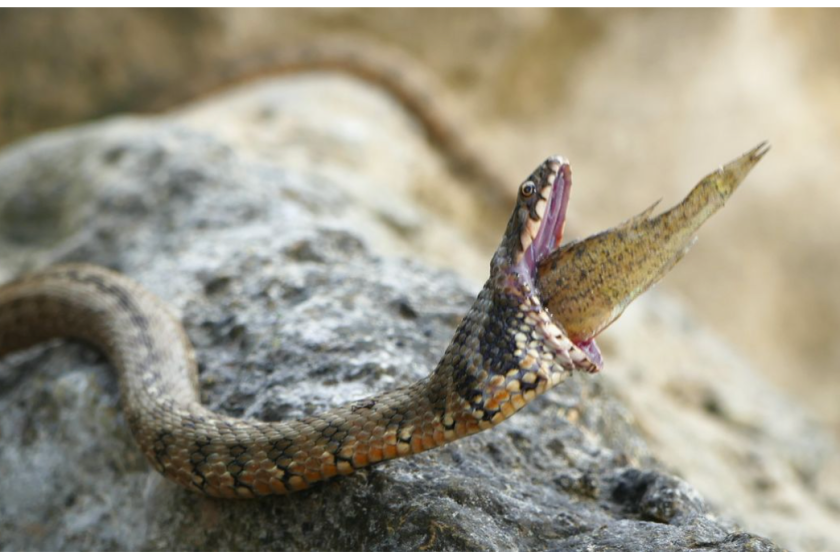
Nicolas Fuento
Viperine snakes are native to France and survive on a diet of fish, but this particular species was a ruffe, Fuento said, which is an invasive species notoriously difficult for predators to swallow due to their tough, spiny dorsal fins. The fish is native to Asia and parts of Europe but has recently been introduced to other parts of Europe, such as France and North America.
Fuento said that the ruffes and the viperine overlap in certain areas, but the spiny fish is an invasive species in the Mediterranean wetlands. In this area, the viperine snake population is waning. Fuento told Live Science that multiple issues are responsible for the population decline, including river pollution, urbanization, and wetland destruction. Ruffes are not the only invasive fish viperines that are having difficulty digesting. Viperines and other European fish-eating snakes have died after eating brown bullheads, largemouth bass, and sunfish. Some snakes have also died after eating native fish, while others avoid the "harmful alien fishes." Fuento said this warrants a further study into the effects of invasive species on native snakes.
"The goal of this article is to quote a new case of mortality by exotic fish," Fuento said. "And we hope that may lead to further research."
READ MORE: Snake Eats Crocodile in Australia as Onlookers Capture the 4-Hour Scene
